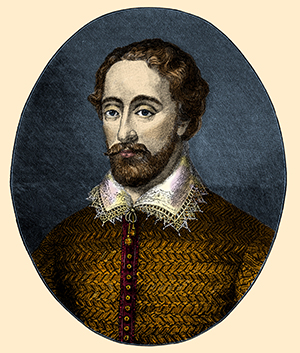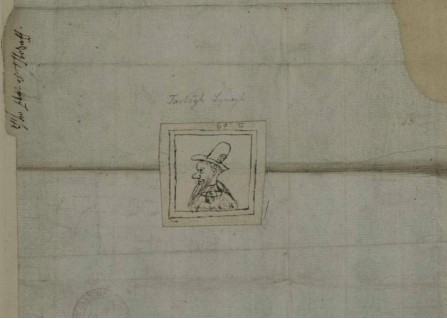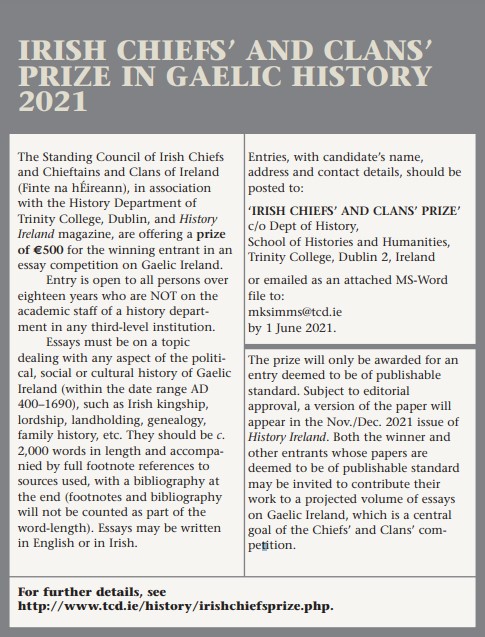The tánaiste and the crown prince problem
Published in Features, Issue 6 (November/December 2020), Volume 28The dangers posed by an ambitious designated successor.
By Matthew McGinty

Above: Vice-President Xi Jinping of China testing his Gaelic football skills in Croke Park in February 2012. A year later he had successfully made the transition from tánaiste to president, not always a foregone conclusion in autocratic regimes—or in Gaelic Ireland.
One of the greatest threats to the regime of a Xi Jinping or a Vladimir Putin is succession, because the autocrat will eliminate ambitious and able would-be competitors once he has consolidated power. One way in which a ruler in the past could manage the problem was to designate a successor in his (and in Gaelic succession it was always ‘his’) lifetime. John Herz argued that this created the ‘crown prince problem’, whereby the designated successor is likely to be able and ambitious and may challenge the ruler. Others have expanded on Herz’s ‘crown prince problem’ theory. Gordon Tullock noted that when an heir apparent is picked he has strong motives to depose the incumbent. There is the risk that he might lose his position as heir and another be nominated in his place. If the chosen successor is relatively close in age to the current ruler, there is the possibility that he might die before the incumbent. Under such circumstances the designated heir is unsure that he will ever get the opportunity to succeed if he remains patient and may decide to take matters into his own hands and depose the incumbent. The tánaiste in Gaelic succession, as it applied in Ireland, was a designated heir or ‘expected one’, according to the eighth-century legal text Críth Gablach, and ‘the whole people looks forward to his kingship without opposition to him’. This article will examine the position of the tánaiste in an early modern context and show that it resulted in Gaelic clans suffering from the crown prince problem.
‘Tanistry’

Above: The most detailed description of the position of tánaiste, Anglicised as ‘tanist’, comes from Edmund Spenser. (Alamy)
The most detailed description of the position of tánaiste, Anglicised as ‘tanist’, comes from Edmund Spenser. According to Spenser, after a chieftain of a Gaelic clan died, an assembly of the clan and their followers would choose and inaugurate a new chieftain. A tánaiste would be picked alongside this new chieftain and succeed him when he died. Spenser and other English contemporaries named this practice ‘tanistry’. Spenser says that seniority was a key determinant in the choice of chieftain and tánaiste to the extent that he portrays tanistry as succession by agnatic seniority. Thus a chieftain was usually succeeded by ‘the next brother unto him, if he have any, or the next cousin germane, or so forth, as any is elder in that kindred’. This preference for seniority was noted by both English and Gaelic sources. During a dispute over the O’Sullivan Beare lordship, Eoghan O’Sullivan and his witnesses claimed that Gaelic succession was de facto by agnatic seniority. They stated that, after the O’Sullivan Beare chieftain died, the ‘ancientest of the blood’ should be chieftain and ‘the next eldest should be tainst’ and chieftain once the incumbent died. Seniority was shown as paramount in 1580 when Ulick and John Burke, sons of the earl of Clanricard, rebelled against the government and reverted to Gaelic succession. Regarding the decision of who should succeed to the chieftainship, Nicholas Malby, the president of Connacht, stated that Ulick’s seniority decided the matter, as John acknowledged that Ulick, as the elder brother, should be chieftain and he the tánaiste. Owing to Ulick’s seniority, John was also willing to be deferential to his brother in other matters and agreed that ‘Ulick’s horse shall always [be] led foremost before’ his. The Annals of the Four Masters similarly remark that John’s willingness to defer to Ulick was because ‘a junior should be to a senior’ obedient.
This preference for agnatic seniority and familial coevals as successors often meant a small age gap between chieftain and tánaiste. A tánaiste dying before the chieftain and never getting an opportunity to rule was therefore a distinct possibility. Spenser hinted at this when he said that the tánaiste would only succeed ‘if he live therunto’. Moreover, the Irish annals show that a tánaiste often died of natural causes before the incumbent. For example, Caffar O’Donnell was his brother’s tánaiste but he died in 1580, twenty years before his brother. In 1517 and 1544 the tánaiste of the O’Neills died before the reigning chieftain. The real prospect of dying before the incumbent argued against patience and encouraged tánaistí to depose chieftains if they wished to secure their own succession. The risk of losing his position as designated successor was also a worry for a tánaiste. While Spenser claimed that a tánaiste was elected alongside the chieftain, other evidence suggests that a chieftain could choose his successor. According to Lord Deputy Charles Blount, Lord Mountjoy, Owney O’More appointed his successor in 1600, and during a dispute between the O’Donnell chieftain and Egneghan O’Donnell in 1480 the two men came to a settlement whereby Egneghan was to hold the position of tánaiste. In 1596 Philip O’Reilly similarly tried to appease his rival, Maolmordha, by offering him the position of tánaiste, and Hugh O’Neill, earl of Tyrone, and Hugh Rua O’Donnell tried to tempt Niall Garbh O’Donnell back into their Gaelic confederacy by making him ‘Tanist of Tyrconnell’. If a tánaiste could be appointed by a chieftain, he could also be discarded by a chieftain. Late in 1578 Turlough Luineach O’Neill fell, to all appearances, mortally ill, so he picked Shane Óg O’Neill to be ‘chefest of the country’ after him. Turlough pulled through, however, and the following year Shane Óg was out of favour, Turlough allying himself instead with Hugh O’Neill. Lord Justice William Phelham reported that in order to cement this new alliance Turlough Luineach made Hugh his ‘Thanist or successor’, but Hugh’s time as Turlough’s tánaiste was short-lived, as the two men soon fell out and resumed their bitter rivalry.
Surrender and regrant
The threat of losing one’s position as tánaiste increased in the sixteenth century, as the Crown tried to eradicate Gaelic succession along with the office of tánaiste. To achieve this the government used the policy of surrender and regrant, which entailed a chieftain surrendering his clan’s lordship to the government. The land would then be given back to the chieftain with letters patent confirming his ownership, and he would also have to abide by certain conditions that aimed to replace Gaelic practices with English customs. Thus, when a Gaelic chieftain agreed to a surrender and regrant arrangement, he would often promise to discard Gaelic succession and observe primogeniture instead, whereby his son rather than the tánaiste would succeed. This could leave the tánaiste ‘extremely discontented as put from all hope of government’, as noted by Edmund Tremayne, chief secretary for Ireland between 1569 and 1571. To secure his succession, the tánaiste might look to overthrow the incumbent and prevent the introduction of primogeniture. In 1553 Donough O’Brien, the second earl of Thomond, tried to adopt primogeniture and establish his son Conor as heir. His brother and tánaiste, Donal, was furious, so he and another brother, Turlough, killed Donough. The O’Briens experienced years of instability thereafter, as Donal tried to withhold Thomond from the government-backed Conor.
Another possible reason why a tánaiste might seek to depose the incumbent rather than wait was that, even if he retained his office and outlived the chieftain, there was no certainty that he would succeed because his right of succession was questionable. Sometimes the right of the tánaiste to succeed was portrayed as absolute. When describing the tánaiste of the O’Donnells in 1543, the then lord deputy, Anthony St Leger, stated that he was the ‘heir apparent, to be the next O’Donnell which is captain of the country [i.e. chieftain]’. When describing Gaelic succession, Tremayne claimed that if a contender wanted to be chieftain then he would need to ‘first be Thanist which is as it were heir in succession and afterwards to be the only ruler when the lo[rd] in possess[ion] dieth’. Contrary evidence suggests that a tánaiste was not automatically entitled to the chieftainship after the incumbent died and instead had to submit to an election. When describing Gaelic succession in 1562, Shane O’Neill, the O’Neill chieftain, said that whenever a chieftain died ‘the country assemble and by common consent electeth and choseth’ a new clan chieftain. Shane O’Neill’s successor was Turlough Luineach O’Neill, who became chieftain in 1567. He ‘had been in Shane’s life tanist of Tyrone’ but it was not by virtue of his position as tánaiste that he succeeded. Rather, in his submission to the government shortly after his becoming chieftain, it was stated that after Shane’s death ‘certain of the country of Tyrone’ assembled and, ‘according to the ancient custom of the same, elected the said Turlough O’Neill’. This implies that a tánaiste still needed to seek election to confirm his succession.
Tánaiste not guaranteed to succeed

Above: An April 1574 drawing of Turlough Luineach O’Neill, who had succeeded his predecessor Shane O’Neill in 1567, not by virtue of his position as tánaiste but because ‘certain of the country of Tyrone’ assembled and, ‘according to the ancient custom of the same, elected the said Turlough O’Neill’. (UK National Archives)
A comment by Richard an Iarainn Burke also suggests that a tánaiste was not guaranteed to succeed and that the election was paramount. When the chieftain of the Burkes of Mayo died in 1580, his brother, Richard MacOliverus Burke, claimed that he was the rightful successor because ‘during his brother’s time he was nominated to be Tanist’. Richard an Iarainn, however, dismissed the tánaiste’s right and stated that he was chieftain because after his predecessor’s death ‘the whole country had given it unto him … and by their election he was possessed of it’. There was therefore little incentive for the tánaiste to wait for the incumbent to die because he could still fail to become chieftain if another was elected.
Another aspect of the crown prince problem suggests that designated successors were more dangerous because the extra power and authority that came with their position meant that they were better able to overthrow the incumbent. The position of tánaiste was no different, as it came with lands and exactions. Spenser said that the ‘Tanist hath also a share of the country allotted unto him, and certain cuttings and spendings upon all the inhabitants under the Lord’. The tánaiste of the O’Sullivan Beare received the castle and lands of Ardea, and during a dispute among the O’Reillys in 1583 it was stated that the tánaiste got ‘some land in respect of his office’.
The tánaiste was the archetypical dangerous designated successor that the crown prince problem identifies. The tánaiste was, nominally at least, an influential heir apparent but was unsure whether he would succeed. He could die before the incumbent or be replaced, or in the election following a chieftain’s death his supposed right to succeed could be ignored and another elected. Therefore, according to the crown prince problem, the tánaiste was incentivised to depose the chieftain if he wanted to guarantee his succession. One would thus expect conflict between tánaistí and chieftains over the chieftainship, and this was indeed the reality in Gaelic Ireland. The O’Neills suffered from the crown prince problem during the early and mid-sixteenth century. Con Bacach O’Neill, who became chieftain of the O’Neills in 1519, had a troubled relationship with his tánaiste, Niall Connallach O’Neill. The extent of the bitterness between them was noted by the lord deputy and council in 1542. They stated that Niall Connallach bore a ‘mortal hate’ towards Con and that there had ‘been long war’ between the two men. This animosity between chieftain and tánaiste was repeated by the two men’s sons. Niall Connallach’s son, Turlough Luineach O’Neill, was tánaiste to Con’s son Shane; when the latter was absent in England for much of the first half of 1562, Turlough launched a failed coup and thereafter the two became bitter rivals.

The Crown tried to capitalise on the crown prince problem. The existence of the tánaiste meant that, if a chieftain proved to be problematic, the government had a ready replacement who was willing to depose the incumbent or at least help keep him in check. In 1567 Lord Deputy Henry Sidney negotiated a settlement between Hugh MacManus O’Donnell and Con O’Donnell. Hugh’s status as chieftain was recognised and Con had to be content with the position of ‘Thanist’ and the castles of Lifford and Castlefin. The lord justices informed the queen that, even though Gaelic succession was ‘barbarous’, allowing Con to be tánaiste was beneficial. He would be better followed than if he were given letters patent, because letters patent represented the introduction of English succession. Those whose claims to land were through Gaelic succession might feel threatened and not support Con. The lord justices thought that having a strong and well-supported tánaiste like Con would be useful if Hugh MacManus ‘should be found unfaithful to your highness’, because ‘the maintenance of Con O’Donnell against him would avail to O’Donnell’s annoyance’. The government, however, underestimated the crown prince problem, because Con O’Donnell would not wait until the Crown needed him to oppose Hugh MacManus. Rather, in the early 1580s Con O’Donnell’s ‘ambition and desire for the chieftainship’ led to war between tánaiste and incumbent. Con and his ally Turlough Luineach O’Neill put Hugh MacManus under so much pressure in 1582 that Nicholas Malby declared that the O’Donnell chieftain was ‘utterly undone’. Hugh MacManus might have been overthrown had it not been for Con’s death the following year.
Conclusion
The tánaiste was, ostensibly at least, the heir apparent and clearly wanted to be chieftain. He was unsure, however, whether he would ever get the opportunity to rule. His position was not secure, as he could be replaced, and the preference for agnatic seniority could result in a small age gap between incumbent and tánaiste, leaving the tánaiste unsure as to whether he would outlive the incumbent. Even if he did, there was no guarantee that he would obtain the chieftainship because another could be elected in his stead. According to the crown prince problem, such circumstances should have encouraged the tánaiste to overthrow the incumbent, especially as the tánaiste was strengthened by the lands and prestige associated with his office. History confirms that the Gaelic clans did struggle with the crown prince problem, as tánaistí, such as Con O’Donnell and Turlough Luineach O’Neill, did look to overthrow the incumbent. The office of tánaiste clearly epitomised the dangerous heir apparent identified by Herz and Tullock.
Matthew McGinty has recently completed a Ph.D in history at NUI Galway.
FURTHER READING
J. Herz, ‘The problem of successorship in dictatorial regimes: a study in comparative law and institutions’, Journal of Politics (February 1952).
J. O’Donovan (ed.), Annals of the Kingdom of Ireland by the Four Masters (Dublin, 1990).
E. Spenser, A view of the present state of Ireland (Oxford, 1970).
G. Tullock, Autocracy (Dordrecht, 1987).
















